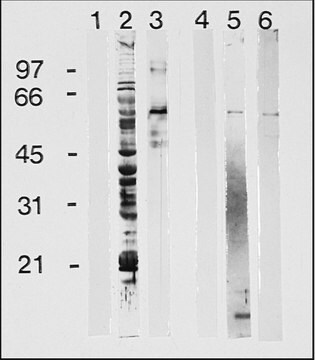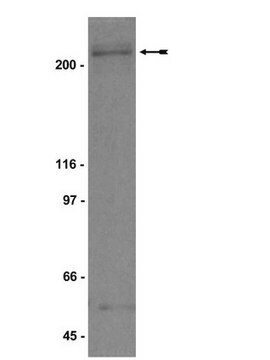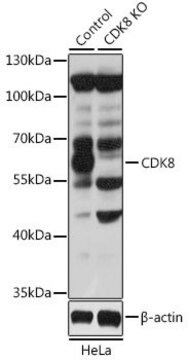おすすめの製品
由来生物
human aorta
品質水準
包装
pkg of 500,000 cells
メーカー/製品名
Cell Applications, Inc
成長モード
Adherent
核型
2n = 46
形態
Endothelial
テクニック
cell culture | mammalian: suitable
関連疾患
diabetes; cardiovascular diseases
輸送温度
dry ice
保管温度
−196°C
詳細
Additionally, HAOEC, along with human subclavian artery (HScAEC), carotid artery (HCtAEC), coronary artery (HCAEC) and brachiocephalic artery (HBcAEC) have been used to demonstrate that not only blood vessels from different tissues are highly heterogeneous, they also interact differently with leukocytes during the inflammation response (Scott, 2013). The authors further showed that differential N-glycosylation of commonly expressed vascular adhesion molecules may be responsible for this heterogeneity, as well as for modulation of signaling under resting and activated inflammatory conditions. This also explains why specific vascular beds may be more or less susceptible to particular diseases or stimuli. Importantly, if cells from different sources were used, these results could not be convincingly validated due to a number of uncontrolled variables, such as age, race, genetic variability or life style choices of the donors.
Because of the complex heterogeneity that exists not only between different donors, but even between different vascular beds in the same individual, it would be prudent to confirm any new findings on primary cell lots coming from several different origins.
Because of the complex heterogeneity that exists not only between different donors, but even between different vascular beds in the same individual, it would be prudent to confirm any new findings on primary cell lots coming from several different origins.
HAOEC from Cell Applications, Inc. have been used to:
- demonstrate that increased glucose flux leads to endothelial dysfunction in diabetes via activating Egr1-mediated proinflammatory and prothrombotic responses (Vedantham, 2013);
- study apoptosis, oxidative stress and inflammation associated with atherosclerosis (Fu, 2014) and demonstrate the beneficial effects of anthocyanin on endothelial cells damaged by exposure to oxidized sterols (Wang, 2012);
- demonstrate that upregulation of thioredoxin via AMPK-FOXO3 pathway protects endothelial cells from oxidative stress and may prevent cardiovascular diseases in patients with metabolic syndrome and diabetes (Li, 2009a,b; Hou, 2010) and further elucidate the involvement of AMPK cascade in mediating beneficial cardiovascular effects of green tea (Reiter, 2010);
- test anti-inflammatory and vasodilating properties of a synthetic rutaecarpine derivative (Lee, 2013);
- show that glycated albumin, associated with diabetic complications, decreases endothelial miR-146a expression which leads to increased IL-6 production, and that angiotensin protects endothelial cells by preventing miR-146a downregulation (Wang, 2013);
- demonstrate that air pollutants can directly affect ZO-1 function leading to increased endothelial permeability, inflammatory cell transmigration and initiation of atherosclerosis (Li, 2010);
- discover the involvement of stress signaling JNK and p38 pathways in pathological suppression of thrombomodulin, a vascular protective molecule, downregulated in many thrombotic and vascular diseases (Rong, 2010);
- link uremic toxins (in particular, PAA) in patients with chronic liver disease to increased ROS production and stimulation of TNF-a in endothelial cells leading to atherosclerosis and vascular calcification (Morita, 2011);
- demonstrate that in diabetes, advanced glycation end products lead to ROS generation in endothelia via sustained NF-kB activation, contributing to progression of atherosclerosis (Morita, 2013);
- discover that CD40 ligand promotes monocyte adhesion to endothelial cells via PKCa, NF-kB and VCAM-1 signaling cascade, explaining the role of CD40L in atherogenesis (Wu, 2013);
- show that monocytes activated by endothelial cells, produce CD80 signaling that leads to allogenic immune response, indicating the need for specific therapy to prevent monocyte activation during allograft transplantation (Wang, 2008);
- identify tetraspanin CD82 as the recognition sensor responsible for rejection of xenotransplants (Saleh, 2013);
- develop 3d endothelialized engineered tissues (Sakai, 2012), as well as new technology based on novel material surfaces and drugs (such as paclitaxel, sirolimus, vitamin C, C6-ceramide and 17?-estradiol) to inhibit smooth muscle cell proliferation at the same time allowing endothelial cells adhesion and proliferation in order to reduce risk associated with vascular implants (Wang, 2009, 2011; Kanie, 2012; Deshpande, 2013; Kakade, 2013; Lamichane, 2013);
Lot specific orders are not able to be placed through the web. Contact your local sales rep for more details.
Human Aortic Endothelial Cells (HAOEC) provide an excellent model system to study all aspects of cardiovascular function and disease, and they have been utilized in dozens of research publications to study diabetes-associated complications related to cardiovascular function, investigate mechanisms of immune response and graft rejection, study endothelial dysfunction caused by air pollution, oxidative stress and inflammation, and develop 3d endothelialized engineered tissues, as well as new technologies based on novel material surfaces and drugs in order to reduce risks associated with vascular implants.
Select HAOEC lots have been additionally tested to demonstrate stimulation-dependent angiogenesis and key endothelial cell signaling pathways (phosphorylation of VEGFR, Akt, MAPK, and expression of Tie2, eNOS, Axl and Etk/Bmx).
Human Aortic Endothelial Cells (HAOEC) provide an excellent model system to study all aspects of cardiovascular function and disease, and they have been utilized in dozens of research publications to study diabetes-associated complications related to cardiovascular function, investigate mechanisms of immune response and graft rejection, study endothelial dysfunction caused by air pollution, oxidative stress and inflammation, and develop 3d endothelialized engineered tissues, as well as new technologies based on novel material surfaces and drugs in order to reduce risks associated with vascular implants.
Select HAOEC lots have been additionally tested to demonstrate stimulation-dependent angiogenesis and key endothelial cell signaling pathways (phosphorylation of VEGFR, Akt, MAPK, and expression of Tie2, eNOS, Axl and Etk/Bmx).
細胞株の由来
Aorta
アプリケーション
cardiovascular function, studies on immune system and graft rejection, development of 3D endothelialized engineered tissues, drug discovery, stent-graft compatibility testing
構成
Basal Medium containing 10% FBS & 10% DMSO
調製ノート
- 2nd passage, >500,000 cells in Basal Medium containing 10% FBS & 10% DMSO
- Can be cultured at least 16 doublings
継代と培養方法
Please refer to the HAOEC Culture Protocol.
免責事項
RESEARCH USE ONLY. This product is regulated in France when intended to be used for scientific purposes, including for import and export activities (Article L 1211-1 paragraph 2 of the Public Health Code). The purchaser (i.e. enduser) is required to obtain an import authorization from the France Ministry of Research referred in the Article L1245-5-1 II. of Public Health Code. By ordering this product, you are confirming that you have obtained the proper import authorization.
保管分類コード
11 - Combustible Solids
WGK
WGK 3
引火点(°F)
Not applicable
引火点(℃)
Not applicable
適用法令
試験研究用途を考慮した関連法令を主に挙げております。化学物質以外については、一部の情報のみ提供しています。 製品を安全かつ合法的に使用することは、使用者の義務です。最新情報により修正される場合があります。WEBの反映には時間を要することがあるため、適宜SDSをご参照ください。
Jan Code
304-05A:
試験成績書(COA)
製品のロット番号・バッチ番号を入力して、試験成績書(COA) を検索できます。ロット番号・バッチ番号は、製品ラベルに「Lot」または「Batch」に続いて記載されています。
Jérôme Duisit et al.
Acta biomaterialia, 73, 339-354 (2018-04-15)
Human ear reconstruction is recognized as the emblematic enterprise in tissue engineering. Up to now, it has failed to reach human applications requiring appropriate tissue complexity along with an accessible vascular tree. We hereby propose a new method to process
Development and characterization of a new inhibitor of heme oxygenase activity for cancer treatment.
Olga Mucha et al.
Archives of biochemistry and biophysics, 671, 130-142 (2019-07-06)
Heme oxygenase-1 (HO-1, HMOX1) degrades pro-oxidant heme into carbon monoxide (CO), ferrous ions (Fe2+) and biliverdin. The enzyme exerts multiple cytoprotective functions associated with the promotion of angiogenesis and counteraction of the detrimental effects of cellular stress which are crucial
プロトコル
Human Aortic Endothelial Cells (HAOEC) Culture Protocol
Human Aortic Endothelial Cells (HAOEC) Culture Protocol
ライフサイエンス、有機合成、材料科学、クロマトグラフィー、分析など、あらゆる分野の研究に経験のあるメンバーがおります。.
製品に関するお問い合わせはこちら(テクニカルサービス)





